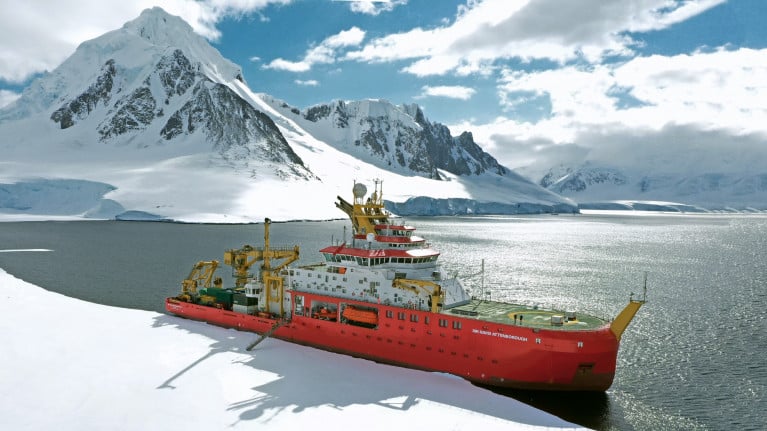Displaying items by tag: BAS
Merchant Navy Cadets from Trinity House Join Prestigious Polar Research Vessel RRS Sir David Attenborough
Merchant Navy Cadets of Trinity House will now be training with the British Antarctic Survey (BAS) on board their new state-of-the-art polar science research vessel RRS Sir David Attenborough (see, sea-trails story of last year)
The four merchant cadets will be joining the vessel for the first time in May 2022 for a four-month training deployment. During their time on board, the cadets will undertake a range of activities and tasks as part of completing their MNTB Training Record Books, including vessel familiarisation, maintenance work and watchkeeping duties.
RRS Sir David Attenborough is one of the most advanced research vessels in the world and is set to transform ship-borne science in the Polar Regions. The ship was commissioned by NERC, built by shipyard Cammell Laird and is operated by BAS.
BAS took delivery of RRS Sir David Attenborough in November 2020 and the ship departed the UK for its maiden voyage on 17 November 2021. The ship is currently sailing back to the UK following a successful first season in Antarctica, under the command of former Trinity House Merchant Navy Scholarship Scheme Cadet Captain Will Whatley.
Captain Nigel Hope, Director of Maritime Training for Trinity House, remarked: “We are delighted BAS have selected Trinity House cadets to train on board RRS Sir David Attenborough, as the training opportunities that BAS can provide will be invaluable. Trinity House cadets train on board a variety of different vessels during their sea phases. We are looking forward to working with BAS on this long-term partnership.”
Captain Will Whatley, Master of RRS Sir David Attenborough, says: “I started my career at sea as a Trinity House Cadet myself so it gives me great pleasure to be able to welcome this first group of cadets aboard our incredible new ship. This trip will give the cadets a fantastic experience as this ship has so many interesting features. I look forward to having Trinity House cadets on board RRS Sir David Attenborough for many years to come.”





























































